First it was Treasurer Joe Hockey. Then it was Prime Minister Tony Abbott. And now it is Finance Minister Mathias Cormann who repeated the lie over the weekend that ‘abolishing’ negative gearing would reduce rental supply and force up rents. From The Canberra Times:
Senator Cormann warned any changes to negative gearing could result in a tougher rental market.
“The Hawke government tried to make changes in this space and very quickly had to reverse that position because of the effect it had on rental prices”…
I apologise to our regular readers for debunking the Coalition once more, since you have read my counter-arguments ad nauseam. However, we are fighting an information war here, and the Coalition’s lies about negative gearing need to be countered with facts.
So let’s once again show why the Coalition is dead wrong and rents would not rise in the event that negative gearing was restricted (or abolished).
First, the evidence shows overwhelmingly that negative gearing does little to boost housing supply, with investors piling into established homes rather than new construction (see below charts).
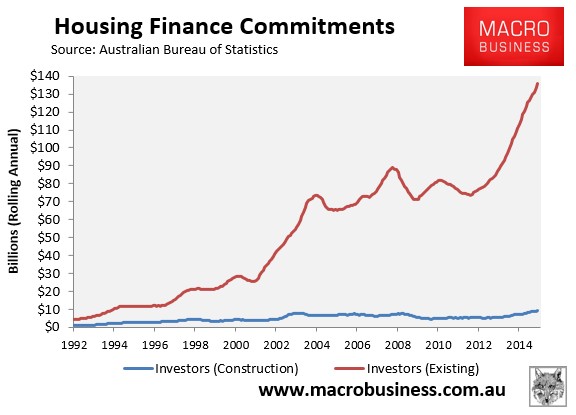
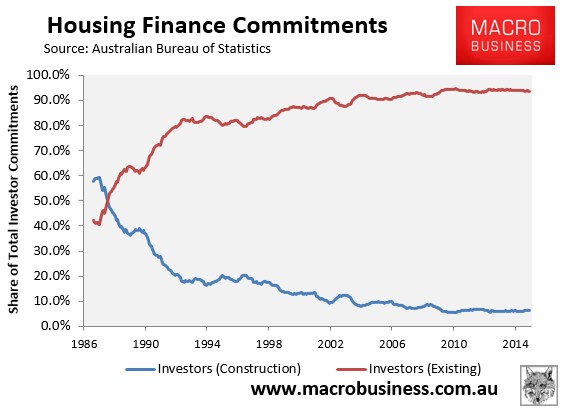
In the event that negative gearing was once again quarantined (as occurred between 1985 and 1987 under the Hawke Government) so that losses could no longer be claimed against wage or salary income, and a proportion of investment properties were sold, who does Cormann think they would sell to? That’s right, renters (or other investors). In turn, those renters would be turned into owner-occupiers, thereby reducing the demand for rental properties, leaving the rental supply-demand balance (and rents) unchanged.
So there’s the theory. Now what about Cormann’s assertion that the abolition of negative gearing by the Hawke Government between 1985 and 1987 caused a “tougher rental market” that forced negative gearing to be reinstated?
Put simply, the rental data from that time period overwhelmingly shows this not be the case.
Rental growth between 1985 and 1987 (shown in red) did not jump nationally after negative gearing’s removal, with periods of higher rental growth recorded both prior and subsequently:
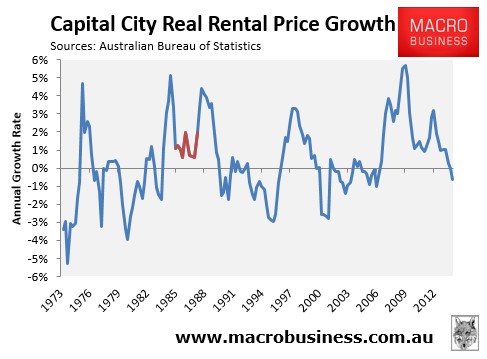
In fact, there was flat or falling rental growth recorded across Melbourne:
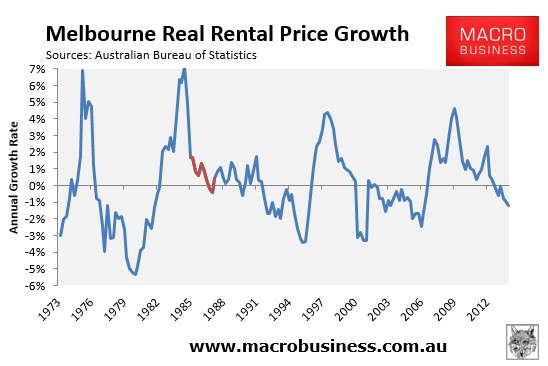
Brisbane:
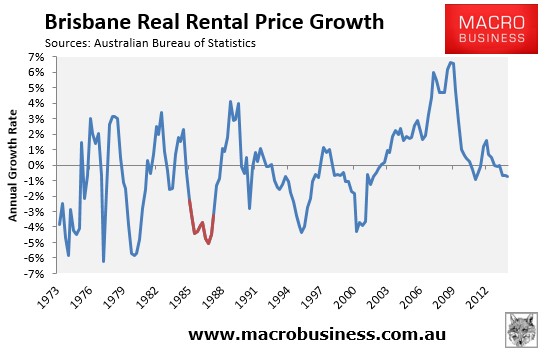
Adelaide:
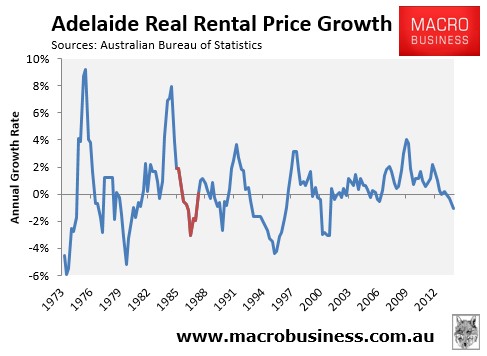
Hobart:
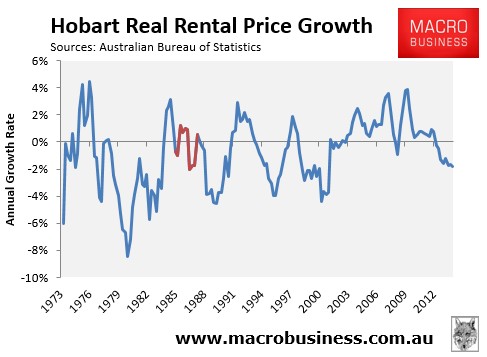
And Canberra:
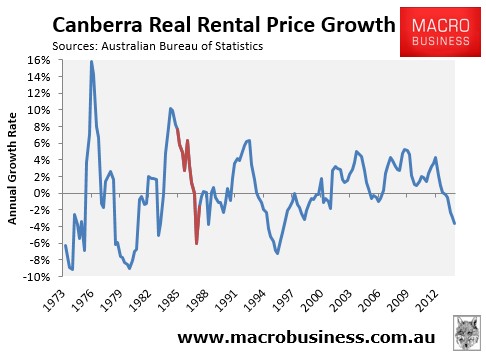
The only two capital cities where rents rose after negative gearing was abolished were Sydney:
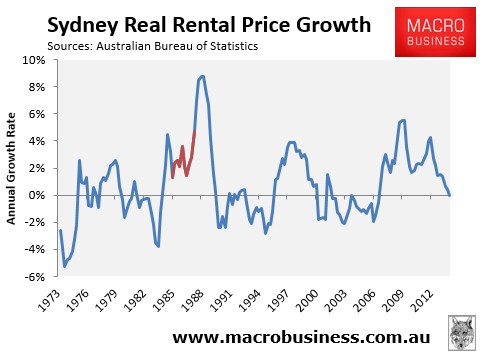
And Perth:
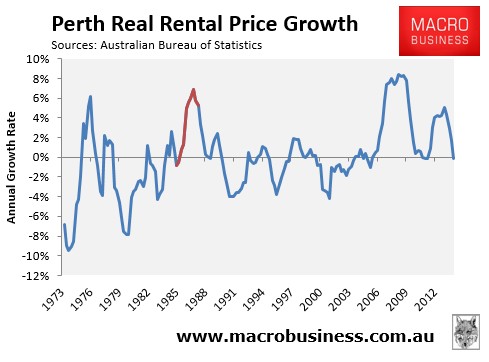
However, this growth in Sydney and Perth rents was due to the fact that rental vacancy rates were already very low at the time in these two cities – as shown in the 1987 Cabinet Submission on negative gearing (see below table) – not because of negative gearing’s temporary ‘abolition’.
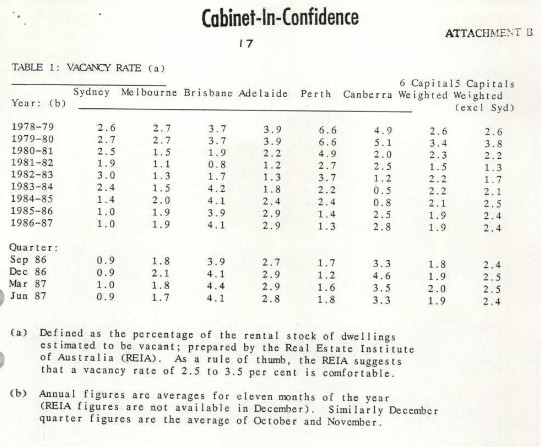
Indeed, the 1987 Cabinet Submission on negative gearing noted this exact phenomenon:
“Data for individual capital cities suggest that, as might be expected, rents have risen more rapidly in those cities where vacancy rates have been tightest. In the twelve months to March quarter 1987, rent increases in six of the eight capitals lagged the CPI”.
Further, as reported on 1 June 1987 in The SMH, New South Wales Tenants Union spokesman, Tracy Goulding, argued that negative gearing had “not had the impact on the supply of housing as the REI [Real Estate Institute] would have us believe”. Goulding also argued that “these taxes aren’t directly responsible for the housing crisis [in Sydney]. The rental crisis is an ongoing thing, there was a shortage of rental properties before negative gearing was introduced; there has been a 10-year shortage.”
Now, if there was any truth whatsoever in the Coalition’s ongoing claims that there would be a significant increase in rents if negative gearing was abolished, then wouldn’t rents have risen Australia-wide, rather than in only Sydney and Perth, when it was temporarily abolished between 1985 and 1987?
Put simply, the facts do not support the Coalition’s assertions. They are flat out lying when it comes to negative gearing and rents, supported by the property lobby.
For example, the Property Council has argued in its submission to Treasury’s Tax Review that negative gearing should be maintained saying its removal “would significantly harm investment, diminish rental supply and ensure that in the short to medium term, rents and property prices will increase”. Fancy that. The property lobby arguing against higher property prices and rents. Something doesn’t add up!
Thankfully, cooler heads have prevailed with Financial System Inquiry chair, David Murray, arguing over the weekend that all tax concessions affecting housing, including negative gearing, need to be reviewed:
Mr Murray said capital gains tax and negative gearing taxes would have to be looked at as part of any policy on the issue.
“You have to look at them all, he said”.
He said his preference was to abolish negative gearing and replace it with neutral gearing.
If the Coalition was serious about “ending the age of entitlement”, improving the Budget bottom line, and improving housing affordability, tax concessions like negative gearing and its partner in crime, the CGT discount, would be up for review.
Instead, we have it defending the status quo with lies. Australians deserve better.

